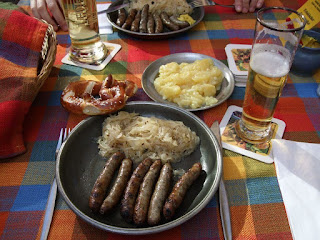It was the best of times, it was the worst of times, it was the age of wisdom, it was the age of foolishness, it was the epoch of belief, it was the epoch of incredulity, it was the season of Light, it was the season of Darkness, it was the spring of hope, it was the winter of despair, we had everything before us, we had nothing before us, we were all going direct to Heaven, we were all going direct the other way—in short, the period was so far like the present period, that some of its noisiest authorities insisted on its being received, for good or for evil, in the superlative degree of comparison only.
A great deal of water has passed under the bridge since Dickens published his novel A Tale of Two Cities in 1859 wherein he described a time leading up to the French Revolution and its Reign of Terror. Even he could see a ray of hope amid the darkness. I think I can safely say that very little that has occurred over the past 12 months can ameliorate the long litany of death, disasters, police violence, racial unrest, unemployment, contempt for civilized behavior, and to top it all off, an all out assault on the Constitution and American democracy led by the very individuals we elected to uphold and protect them. Just one year ago I had no idea that 2020 was going to turn into an annus horriblis, a dystopian world of almost epic and catastrophic proportions. It was the worst of times . . . period.
As I sit here writing this, the weather has turned quite dreary as a large and intense winter storm is headed eastward from the Great Plains; a particularly drab ending to an exceedingly grotty year. New Year’s Eve is normally a happy time. At the end of a festive holiday season we are glad to welcome a new year of promise while bidding a wistful farewell to the year gone by. Not this time. All I can say is good riddance!
It is time to look to the future although I must confess that 2021 will not be getting off to an auspicious start. Over 300,000 have died from the COVID-19 novel coronavirus pandemic in this country and the number of deaths continue to rise at an alarming rate. Just this past week a new, more virulent strain of the virus first recorded in the United Kingdom, has now reached our shores and we know neither how it arrived or how it might spread. There are major problems rolling out new vaccines whose impact on combating the original virus is yet to be quantified and our government continues to be as flummoxed and dismissive as it has been since the pandemic began. The new year will continue to find this country locked down and isolated from the rest of the world.
We look forward to the inauguration of a new, caring, and qualified president after the four year nightmare of the T*** interregnum during which it turned a blind eye to the needs of the country and its people. It dismantled programs to provide proper health care, especially as the pandemic ravaged the country, as well as efforts to address climate change and environmental degradation. It abandoned our allies while getting cozy with brutal dictators. It allowed the president and his family to stuff their pockets and purses with ill-gotten riches at the expense of the American people. And even after being cast out by a substantial majority of the electorate it continues to attack the Constitution seeking ways to overturn the outcome, claiming the election was stolen while failing to provide any evidence to support its claims. As a result, this country has divided into two widely divergent camps. America is not what it used to be and we can honestly wonder whether it will ever be the same again.
Pardon me if I don’t toot my horn, throw confetti, set off fireworks, or pop open that bottle of champagne. I don’t want to be a party pooper, but 2021 is already beginning to dim before that magical hour of anticipated renewal. However, I remain hopeful for the little blessings we continue to enjoy and cherish even though I know it is going to be an uphill slog over the coming months. That is why we should all try just a little harder . . . give it that extra measure of positivity as we welcome 2021.
So let me wish you and yours a happier and healthier New Year. Let’s hope for the best. It’s all we can really do.

























